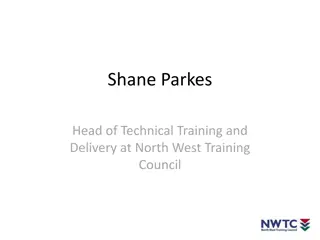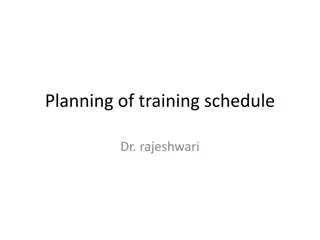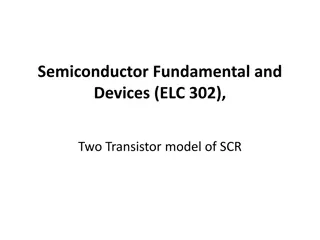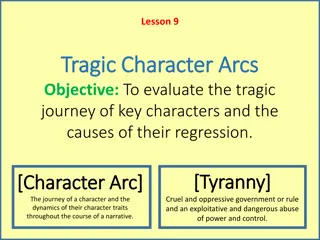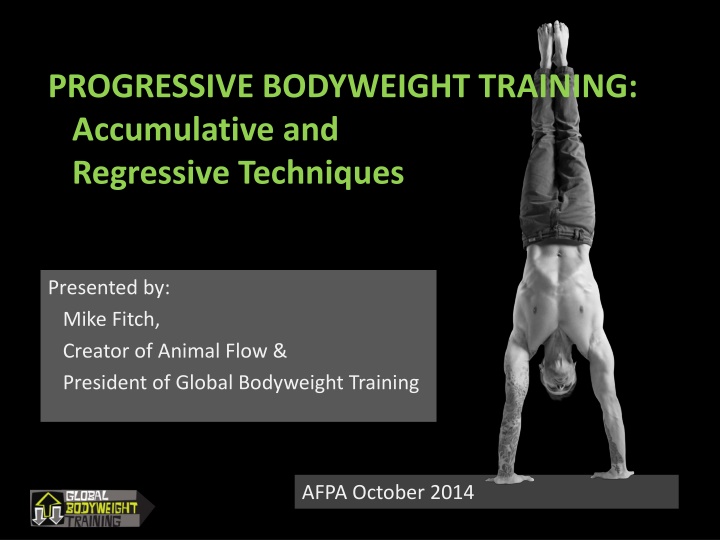
Bodyweight Training Techniques for Progression and Regression
Explore the principles of Progressive Bodyweight Training for enhancing strength and endurance through manipulation of exercise variables like sets, reps, tempo, and intensity, presented by Mike Fitch, founder of Animal Flow. Discover how to adjust body load, resistance arms, and complexity for optimal results.
Download Presentation

Please find below an Image/Link to download the presentation.
The content on the website is provided AS IS for your information and personal use only. It may not be sold, licensed, or shared on other websites without obtaining consent from the author. If you encounter any issues during the download, it is possible that the publisher has removed the file from their server.
You are allowed to download the files provided on this website for personal or commercial use, subject to the condition that they are used lawfully. All files are the property of their respective owners.
The content on the website is provided AS IS for your information and personal use only. It may not be sold, licensed, or shared on other websites without obtaining consent from the author.
E N D
Presentation Transcript
PROGRESSIVE BODYWEIGHT TRAINING: Accumulative and Regressive Techniques Presented by: Mike Fitch, Creator of Animal Flow & President of Global Bodyweight Training AFPA October 2014
Progressive Bodyweight Training Bodyweight Training: Newest fitness trend? Or oldest exercise method?
Progressive Bodyweight Training What is Bodyweight Training? Regular weight training LOADS the movement with external weight Bodyweight training replaces all the external load with BODY LOADED exercise. Your body itself becomes the weight.
Progressive Bodyweight Training Common Exercise Variables Sets (increase for total volume of workout) Reps (increase/decrease with goals) Tempo (adjust to elicit more muscular endurance or power performance) Rest (alter to match the rest of the sets) Intensity (or amount of weight) We manipulate these variables to achieve specific goals.
Progressive Bodyweight Training Bodyweight Training Variables The INTENSITY or load (our bodyweight) is now constant. To increase the CHALLENGE, we can: Increase % of body load Alter the resistance arm Add complexity Create asymetrical load
Progressive Bodyweight Training Bodyweight Variables: % OF BODY LOAD To change the % of body load, we can: manipulate our position in space
Progressive Bodyweight Training Bodyweight Variables: ALTER RESISTANCE ARM To change the leverage of the muscles in relation to the resistance: Increase (or decrease) the length of the resistance arm Will increase or decrease the body load
Progressive Bodyweight Training Bodyweight Variables: ADD COMPLEXITY Last variable for overall progression of a bodyweight exercise is to add complexity: Introduce a balance or stability component Added movement Tempo change
Progressive Bodyweight Training Bodyweight Variables: CREATE ASYMETRICAL LOAD To increase the challenge we can shift the bodyweight, loading one limb more than the other.
Progressive Bodyweight Training What is a BODYWEIGHT ATHLETE? Self-mastery Skills Practice No longer interested in simply lifting more weight, the new breed of Bodyweight Athlete pushes their own boundaries to achieve feats of strength, balance, and skill
Progressive Bodyweight Training Just your own body and gravity (exercise gimicks have always been a part of the fitness industry!)
Progressive Bodyweight Training Pinnacle Exercises (Dynamic) Single-Arm Push-Up Handstand Push-Up Single-Arm Chin-Up Muscle Up Pistol Squat
Progressive Bodyweight Training Pinnacle Exercises (Static) Planche Lever (Back) Human Flag Hand Balance
Progressive Bodyweight Training How do we get to the Pinnacle Exercises? SKILL: competent excellence in performance; expertness; dexterity HIGHER NEURAL LOAD: requires increased levels of motor control at the conscious and reflexive level
Progressive Bodyweight Training Example: The Handstand Push-Up An incredible amount of internal communication and tension is required within your body to make this happen Formula to learn the skill: MAXIMAL STRENGTH + BALANCE/STABILITY + COORDINATION
Progressive Bodyweight Training SKILLS BUILDING Maximal Strength (motor unit recruitment) Balance/Stability (proprioception) Coordination (neuromuscular efficiency combining all of the above) Improve our skillfulness Higher neural load
Progressive Bodyweight Training Sample Progression: The Handstand Push-Up Hands-Elevated Pike Push-Up Floor Pike Push-Up 90-Degree Pike Push-Up Wall-Assisted Handstand Push-Up Suspension Assisted Handstand Push-Up PINNACLE: Freestanding Handstand Push-Up
Progressive Bodyweight Training ACCUMULATIVE / REGRESSIVE TRAINING How do we work toward building those skills and neural adaptations? ACCUMULATIVE is the practice REGRESSIVE is the goal specific conditioning
Progressive Bodyweight Training ACCUMULATIVE / REGRESSIVE TRAINING Begin with the THRESHOLD ASSESSMENT: Using gradual progressive overload to find someone s Bodyweight Threshold (at what point they begin to break down or compensate)
Progressive Bodyweight Training ACCUMULATIVE / REGRESSIVE TRAINING Implement REGRESSIVE SKILLS TRAINING Use rep ranges similar to drop sets in resistance training: REP RANGE Chart Strength: Strength/Hypertrophy: 6-12 Endurance: 1-6 12-20 (up to 50)
Progressive Bodyweight Training Learn more about bodyweight training: www.GlobalBodyweightTraining.com email: Mike@GlobalBodyweightTraining.com Interested in progressing your Hand Balancing? Use code AFPAGRAVITY to save $25 off GBT s video: Hand Balancing for the Bodyweight Athlete (at the website above)




